Wessex
Kingdom of the West Saxons Latin: Regnum Occidentalium Saxonum | |||||||||||
|---|---|---|---|---|---|---|---|---|---|---|---|
| c. 519–927 | |||||||||||
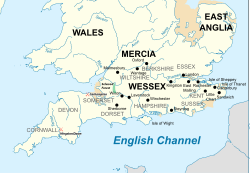 Southern Britain in the ninth century | |||||||||||
| Status | Independent kingdom (c. 519 – c. 645; 648–927) Client state of Mercia (645–648) | ||||||||||
| Official languages | Old English | ||||||||||
| Religion | Paganism (before 7th century) Christianity (after 7th century) | ||||||||||
| Government | Monarchy | ||||||||||
| King (List) | |||||||||||
• c. 519 – c. 534 | Cerdic (first) | ||||||||||
• 688–726 | Ine | ||||||||||
• 802–839 | Ecgberht | ||||||||||
• 871–899 | Alfred the Great | ||||||||||
• 899–924 | Edward the Elder | ||||||||||
• 924–927 | Æthelstan (last) | ||||||||||
| History | |||||||||||
• Established | c. 519 | ||||||||||
| 12 July 927 | |||||||||||
| Currency | Penny | ||||||||||
| |||||||||||
| Today part of | |||||||||||
The Kingdom of the West Saxons, also known as the Kingdom of Wessex, was an Anglo-Saxon kingdom in the south of Great Britain, from around 519 until England was unified in 927.
The Anglo-Saxons believed that Wessex was founded by
During the 8th century, as the
Wessex was invaded by the
History
Prehistoric Britain
From the
Roman Britain
Following the
In the mid-4th century there were increasing raids on Roman Britain by peoples such as the
Anglo-Saxon settlement

Theories about the settlement of Saxons, Jutes and Angles in Britain are divided into two categories by the historian Peter Hunter Blair (1956), namely "Welsh" and "English".
The Welsh tradition
The Welsh tradition is exemplified by Gildas, in De Excidio et Conquestu Britanniae. In brief, it states that after the Romans left, the Celtic Britons managed to continue for a time without any major disruptions. However, when finally faced with northern invaders, a certain unnamed ruler in Britain (called "a proud tyrant" by Gildas) requested assistance from the Saxons in exchange for land.
There were no conflicts between the British and the Saxons for a time, but following "a dispute about the supply of provisions" the Saxons warred against the British and severely damaged parts of the country. In time, however, some Saxon troops left Britain; under Ambrosius Aurelianus, the British subsequently defeated those who remained.
A lengthy conflict ensued, in which neither side gained any decisive advantage until the Britons routed the Saxons at the Battle of Mons Badonicus. After this, there occurred a peaceful period for the Britons, under which Gildas was living at the time he wrote the De Excidio et Conquestu Britanniae.[6]
The English tradition
One of the "English" traditions about the Saxon arrival concerns
Further details were added to the story in the Historia Brittonum, which was partially written by Nennius. According to the Historia, Hengest and Horsa fought the invaders of Britain under the condition of gaining the Island of Thanet. The daughter of Hengest, Rowena, later arrived on a ship of reinforcements, and Vortigern married her.
However, a war arose in Kent due to a dispute between Hengest and Vortigern's son. After losing several battles, the Saxons finally defeated the British by treacherously attacking them once the two parties had convened for a meeting. Some additional details of the Hengest and Horsa legend are found in the Anglo-Saxon Chronicle. The Chronicle then records subsequent Saxon arrivals, including that of Cerdic, the founder of Wessex, in 495.[7]
The Anglo-Saxon Chronicle
According to the
The Chronicle continues, stating that "Port, and his two sons Bieda and Mægla", landed at Portsmouth in 501 and killed a high-ranking British nobleman.[9] In 508, Cerdic and Cynric slew British king Natanleod along with five thousand of his men[9] (though the historicity of Natanleod has been disputed),[10] and Cerdic became the first king of Wessex in 519.
The Saxons attacked Cerdicesford[11] in 519, intending to cross the River Avon and block a road which connected Old Sarum and Badbury Rings, a British stronghold. The battle appears to have ended as a draw, and the expansion of Wessex ended for about thirty years. This is likely due to losses suffered during the battle and an apparent peace agreement with the Britons.
The battle of
Cynric became the ruler of Wessex after Cerdic died in 534, and reigned for twenty-six years. in 577, after the pause caused by the battle of Mons Badonicus, opened the way to the southwest.
Ceawlin is one of the seven kings named in Bede's
Six years later, in about 594, Ceol was succeeded by a brother,
The tradition embodied in the Anglo-Saxon Chronicle, and in the genealogies of the West Saxon dynasty, is open to considerable doubt. This is largely because the founder of the dynasty and a number of his alleged descendants had Brittonic Celtic, rather than Anglo-Saxon Germanic, names.[15] The name Cerdic is derived from the British name Caraticos.[16][17] This may indicate that Cerdic was a native Briton, and that his dynasty became anglicised over time.[18][19][20] Other members of the dynasty possessing Celtic names include Ceawlin and Cædwalla. Cædwalla, who died as late as 689, was the last West Saxon king to possess a Celtic name.[21]
Christianisation of Wessex

It is in Cynegils' reign that the first event in West Saxon history that can be dated with reasonable certainty occurs: the
These attacks marked the beginning of sustained pressure from the expanding kingdom of
After Cenwealh's death in 673, his widow,
Centwine was succeeded by another supposed distant relative,
His successor was Ine, who also claimed to be a descendant of Cerdic through Ceawlin, but again through a long-separated line of descent. Ine was the most durable of the West Saxon kings, reigning for 38 years. He issued the oldest surviving English code of laws apart from those of the kingdom of Kent, and established a second West Saxon bishopric at Sherborne, covering the area west of Selwood Forest, which formed an important boundary between east and west Wessex. Near the end of his life he followed in Cædwalla's footsteps by abdicating and making a pilgrimage to Rome. The throne then passed to a series of other kings who claimed descent from Cerdic but whose supposed genealogies and relationship to one another are unknown.
During the 8th century Wessex was overshadowed by Mercia, whose power was then at its height, and the West Saxon kings may at times have acknowledged Mercian overlordship. They were, however, able to avoid the more substantial control which Mercia exerted over smaller kingdoms. During this period Wessex continued its gradual advance to the west, overwhelming the British kingdom of
Hegemony of Wessex and the Viking raids
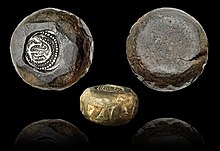
In 802 the fortunes of Wessex were transformed by the accession of
Egbert's later years saw the beginning of
In 855–856 Æthelwulf went on
Last English kingdom
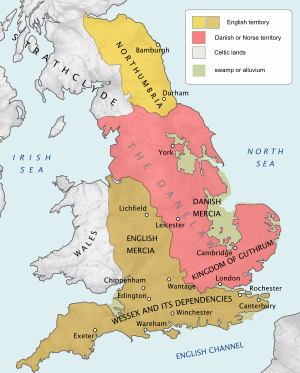
In 865, several of the Danish commanders combined their respective forces into one large army and landed in England. Over the following years, what became known as the
In 879 a Viking fleet that had assembled in the Thames estuary sailed across the channel to start a new campaign on the continent. The rampaging Viking army on the continent encouraged Alfred to protect his Kingdom of Wessex.[29] Over the following years Alfred carried out a dramatic reorganisation of the government and defences of Wessex, building warships, organising the army into two shifts which served alternately and establishing a system of fortified burhs across the kingdom. This system is recorded in a 10th-century document known as the Burghal Hidage, which details the location and garrisoning requirements of thirty-three forts, whose positioning ensured that no one in Wessex was more than a long day's ride from a place of safety.[30] In the 890s these reforms helped him to repulse the invasion of another huge Danish army – which was aided by the Danes settled in England – with minimal losses.
In 2015, two individuals found a large hoard near Leominster consisting primarily of Saxon jewellery and silver ingots but also coins; the latter date to around 879 CE. According to a news report, "experts believe it [the hoard] was buried by a Viking during a series of raids known to have taken place in the area at that time", while Wessex was ruled by Alfred the Great and Mercia by Ceolwulf II. Two imperial coins recovered from the treasure hunters depict the two kings, "indicating an alliance between the two kingdoms—at least, for a time—that was previously unknown to historians", according to the report.[31][32] A report by The Guardian adds that[33]
"The presence of both kings on the two emperor coins suggests some sort of pact between the pair. But the rarity of the coins also suggests that Alfred quickly dropped his ally, who was just about written out of history".
Alfred also reformed the administration of justice, issued a new law code and championed a revival of scholarship and education. He gathered scholars from around England and elsewhere in Europe to his court, and with their help translated a range of
 |
 |
 |
|---|---|---|
Wessex and areas under its control in 871.
|
Wessex and areas under its control in 886.
|
Wessex and areas under its control in 897.
|
The Danish conquests had destroyed the kingdoms of Northumbria and East Anglia and divided Mercia in half, with the Danes settling in the north-east while the south-west was left to the English king
Unification of England and the Earldom of Wessex
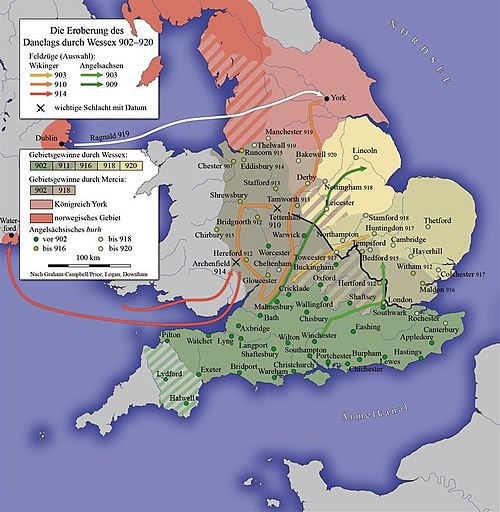
After the invasions of the 890s, Wessex and English Mercia continued to be attacked by the Danish settlers in England, and by small Danish raiding forces from overseas, but these incursions were usually defeated, while there were no further major invasions from the continent. The balance of power tipped steadily in favour of the English. In 911 Ealdorman Æthelred died, leaving his widow, Alfred's daughter Æthelflæd, in charge of Mercia. Alfred's son and successor Edward the Elder, then annexed London, Oxford and the surrounding area, probably including Middlesex, Hertfordshire, Buckinghamshire and Oxfordshire, from Mercia to Wessex. Between 913 and 918 a series of English offensives overwhelmed the Danes of Mercia and East Anglia, bringing all of England south of the Humber under Edward's power. In 918 Æthelflæd died and Edward took over direct control of Mercia, extinguishing what remained of its independence and ensuring that henceforth there would be only one Kingdom of the English. In 927 Edward's successor Æthelstan conquered Northumbria, bringing the whole of England under one ruler for the first time. The Kingdom of Wessex had thus been transformed into the Kingdom of England.
Although Wessex had now effectively been subsumed into the larger kingdom which its expansion had created, like the other former kingdoms, it continued for a time to have a distinct identity which periodically found renewed political expression. After the death of King
After the conquest of England by the Danish king
Symbols
Wyvern or dragon
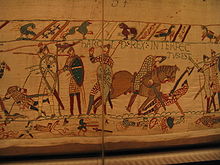
Wessex is often symbolised by a wyvern or dragon.
Both
A panel of 18th century
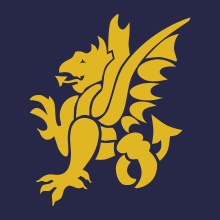
In the British Army the wyvern has been used to represent Wessex: the 43rd (Wessex) Infantry Division, and postwar regional 43 (Wessex) Brigade adopted a formation sign consisting of a gold wyvern on a black or dark blue background. The regular Wessex Brigade of the 1960s adopted a cap badge featuring the heraldic beast, until the regiments took back up individual regimental badges in the late 1960s. The Territorial Army Wessex Regiment continued to wear the Wessex Brigade badge until the late 1980s when its individual companies too readopted their parent regular regimental cap badges. The now disbanded West Somerset Yeomanry adopted a Wessex Wyvern rampant as the centre piece for its cap badge, and the current Royal Wessex Yeomanry adopted a similar device in 2014 when the Regiment moved from wearing individual squadron county yeomanry cap badges to a unified single Regimental cap badge.
When

In the 1970s
Cross of Saint Aldhelm
A white cross on a field of red, known as the Flag of
Attributed coat of arms
A coat of arms was attributed by medieval heralds to the Kings of Wessex. These arms appear in a manuscript of the 13th century, and are blazoned as Azure, a cross patoncé (alternatively a cross fleury or cross moline) between four martlets Or.[42]
The attributed arms of Wessex are also known as the "Arms of Edward the Confessor", and the design is based on an emblem historically used by
Cultural and political identity in modern times
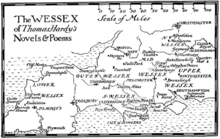
In the book and television series The Last Kingdom, Wessex is the primary setting, focusing on the rule of Alfred the Great and the war against the Vikings.[45]
Wessex remains a common term for the area.
In 2023 a
See also
Footnotes
- ^ David N. Dumville, 'The West Saxon Genealogical Regnal List and the Chronology of Early Wessex', Peritia, 4 (1985), 21–66.
- ISBN 9780521537773.
- ^ Blair 2003, pp. 2–3
- ^ Blair 2003, p. 3
- ^ Yorke 1995, p. 11
- ^ Blair 2003, pp. 13–14
- ^ Blair 2003, pp. 14–16
- ISBN 9781134707249.
- ^ a b c d Giles, p. 9
- ^ Yorke 2002, p. 4
- ^ "Cerdicesford" is known with certainty to be Charford. (Major, p. 11)
- ^ Major, Albany F. Early Wars of Wessex (1912), pp. 11–20
- ^ Major, p. 19
- ^ See the "Genealogical Tables" in the appendices to Swanton, Anglo-Saxon Chronicle.
- ^ Kenneth Jackson (1953) Language and History in Early Britain. Edinburgh. pp. 554, 557, 613 and 680.
- ^ Parsons, D. (1997) British Caraticos, Old English Cerdic, Cambrian Medieval Celtic Studies, 33, pp, 1–8.
- ISBN 1851094407, pp. 394–395
- ISBN 1851094407, pp. 392–393
- ^ Yorke 1995, pp. 190–191
- ^ J.N.L. Myres (1989) The English Settlements. Oxford University Press, pp. 146–147
- ISBN 1852640278pp.138–139
- ISBN 1874336504.
- ISBN 9781134707256.
- ^ Major, Albany F. Early Wars of Wessex, p.105
- ^ "BBC - History - Alfred the Great". www.bbc.co.uk.
- ISBN 0521440491.
- ^ "Celtic Kingdoms of the British Isles: Dumnonii". The History Files. Retrieved 27 December 2015.
- ^ Albert S. Cook, Asser's life of King Alfred, 1906
- ISBN 0192854348.
- ^ The Burghal Hidage: Alfred's Towns
- ^ "MILLIONS OF DOLLARS OF VIKING TREASURE THAT COULD REWRITE HISTORY STOLEN, METAL DETECTORISTS CONVICTED". Newsweek. 22 November 2019. Retrieved 24 November 2019.
- ^ "Detectorists stole Viking hoard that 'rewrites history'". BBC News. 21 November 2019. Retrieved 24 November 2019.
- ^ "Detectorists stole Viking hoard that 'rewrites history'". The Guardian. 21 November 2019. Retrieved 24 November 2019.
- J. S. P. Tatlock, The Dragons of Wessex and Wales in Speculum, Vol. 8, No. 2. (Apr., 1933), pp. 223–235.
- ^ "The Coat of Arms". Somerset County Council. Retrieved 14 January 2008.[dead link]
- ^ "Civic Heraldry of England and Wales – Cornwall and Wessex Area – Wiltshire County Council". Civicheraldry.co.uk. Archived from the original on 20 November 2016. Retrieved 6 August 2011.
- ^ "Civic Heraldry of England and Wales – Cornwall and Wessex Area – Dorset County Council". Civicheraldry.co.uk. Archived from the original on 20 November 2016. Retrieved 6 August 2011.
- ^ "The Arms of the Countess of Wessex". Royal Insight. Royal.gov.uk. 28 October 2010. Archived from the original on 22 February 2008. Retrieved 28 November 2010.
- ^ The Flag Institute: Wessex. Retrieved 26 August 2015
- ^ Tomislav Todorovic (17 September 2016). "Banners of English saints: St. Aldhelm". Flags of the World. Retrieved 13 April 2023.
- ^ Wessex flag flying advice
- ^ College of Arms MS L.14, dating from the reign of Henry III
- ^ For example in Divi Britannici by Winston Churchill, published in 1675 and Britannia Saxona by G W Collen published in 1833
- ^ a b "Wessex". Oxford English Dictionary (2nd ed.). Oxford University Press. 1989.
- ^ Una Maguire (9 July 2014). "BBC Two announces new drama series, The Last Kingdom". BBC. Retrieved 24 July 2014.
- ^ "Dorset Council leader confirms devolution partnership plan". BBC News. 16 December 2023. Retrieved 16 December 2023.
Bibliography
- Blair, Peter Hunter (17 July 2003). An Introduction to Anglo-Saxon England (Third ed.). Cambridge University Press. ISBN 978-0-521-53777-3
- Yorke, Barbara (1995). Wessex in the Early Middle Ages. A&C Black. ISBN 978-0-7185-1856-1.
External links
- The Burghal Hidage
- Thomas Hardy's Wessex Research site by Birgit Plietzsch
- The History Files: Kings of the West Saxons
- Wessex Law Academy
- Wessex Society

